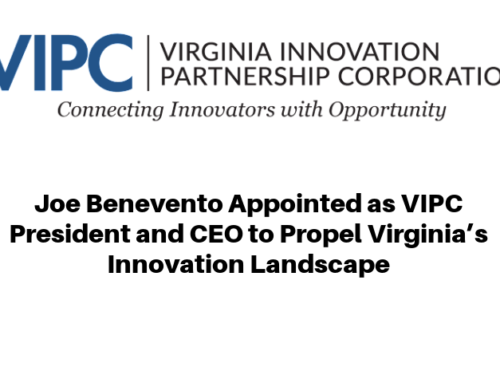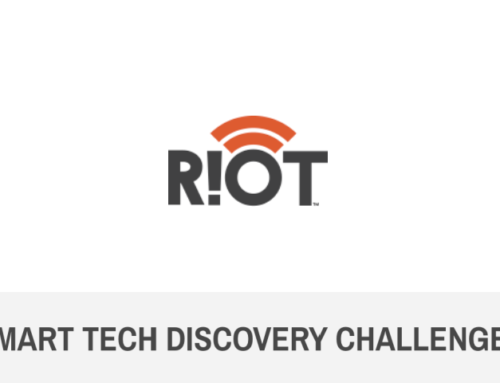By CHARLES V. MCPHILLIPS

Leaders in Norfolk are hoping the green areas on the map become widely known as the Norfolk Innovation Corridor. (Courtesy of Norfolk Innovation Corridor)

McPhillips
From the dawn of the industrial age to the modern day’s knowledge-based economy, entrepreneurs and their companies have gravitated to metropolitan areas where they can find three resources abundantly pooled: (1) skilled talent located in or powerfully attracted to the area, (2) technology spill-overs from similar firms and academic institutions based there, and (3) deep value-added support from locally bunched players in their service/supply chain.
Our opportunity lies in persuading entrepreneurs that the resources they most need are deeply pooled in our region, especially in the Norfolk Innovation Corridor, where “resilience products, services and technologies” are being developed by anchor institutions and firms clustered close together. Due to the assets and activity concentrated in the corridor, Norfolk has it within its grasp to become widely known as the most resilient city in America.
The ability of an individual, an organization or a metropolitan area to absorb a shock to its functioning and its structure, and then to recover from it, is essential in a world where threats to our economic, social and individual ways of life abound. These threats are present in various “verticals,” including rising sea levels and violent storms; large-scale intrusions and disruptions of our information technology systems; interruptions in the supply chains (products and services) necessary for businesses to operate; and other threats that would undermine our economic security and personal safety.
What evidence makes us believe that we have the true firepower to assume a dominant or leading position in the resilience marketplace? For the answer, please visit norfolkinnovation.com to see the map illustrating the extraordinary assets concentrated in the Norfolk Innovation Corridor.
Flanked by our extraordinary waterfront, the corridor is anchored by a host of academic and health care institutions that are developing world-class expertise in sea-level adaptation, population health analytics, cybersecurity and port/supply-chain logistics. Paired with our anchor institutions is a burgeoning colony of early-stage technology businesses located in and around the corridor.
The corridor is also equipped with next-generation broadband fiber running right down Brambleton Avenue, together with other innovation infrastructure such as the new “Assembly” project on Granby Street, the downtown Norfolk State University and Old Dominion University Innovation Centers, popular downtown co-working facilities, the creative constellation of digital marketing firms and arts organizations lighting up the Neon District and Downtown Norfolk, business accelerators such as 757 Accelerate and RISE (the latter of which is expressly dedicated to resilience products, services and technologies), and the list goes on and on.
In terms of magnetic places and activities that will help us attract and retain the talent needed to exploit our opportunity in resilience, consider these prominent features on the corridor map: the dramatically improving Elizabeth River Trail (which, by the way, includes the “Sentara Loop” that takes visitors down the most beautiful city street in America, Mowbray Arch); and the historic and authentic mixed-use built environment located downtown and in the Neon District, Fort Norfolk area, Chelsea community and the Railroad District.
In short, we are positioned to succeed like the renowned innovation districts in Boston, Chattanooga, Durham and Philadelphia because of the physical, networking and economic assets arrayed in productive density within the Norfolk Innovation Corridor.
Building on these assets, we can rely less on “whale hunting” for business relocations by hawking our relatively cheap real estate and labor, imploring companies to move to Tidewater simply because we need them here. Instead, we now have the opportunity to exploit our competitive advantages and leverage our assets so that entrepreneurs and technically-skilled innovators increasingly perceive that they need to be here.
By fostering this recognition in the marketplace, we will boost our numbers of start-ups and early-stage growth companies — where the vast majority of new jobs are created — as entrepreneurs and innovators come to the Norfolk Innovation Corridor to get what they need.
Although we will always cherish the blessings of our region’s military establishment, port industries and tourist attractions, the Norfolk Innovation Corridor will help diversify our economy by developing another core strength — resilience!
If only because of our existential confrontation with sea level rise, we are uniquely motivated to make resilience a priority to help us cope with life on the seaboard. We should be similarly motivated to answer other resilience-related challenges that plague us and the rest of humanity, whether in cybersecurity, population health, behavioral health, supply chain stability or homeland security.
Once the Norfolk Innovation Corridor becomes the acknowledged epicenter of resilience products, services and technologies in our national economy, we will have both diversified and revitalized our region’s economy.
Charles V. McPhillips served as president of Greater Norfolk Corporation from 2014 to 2020.






